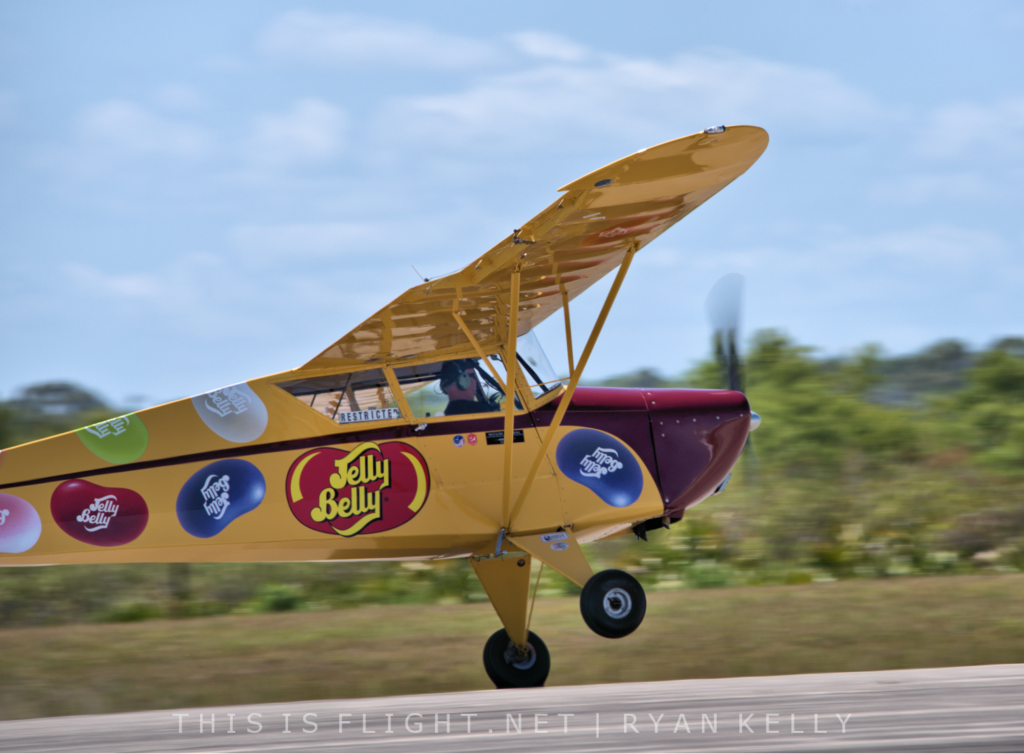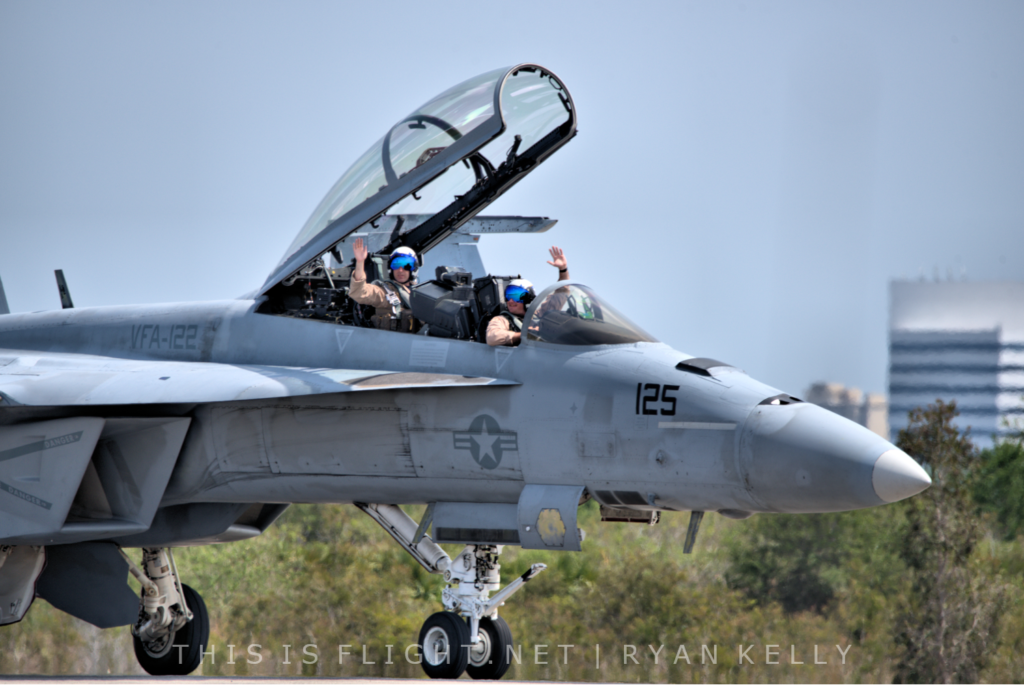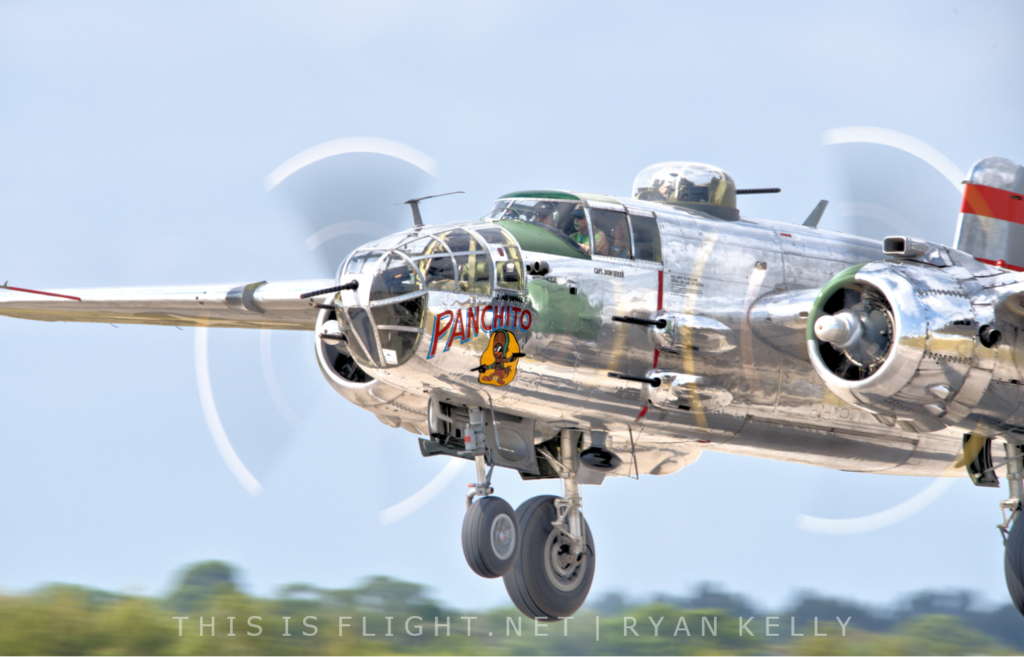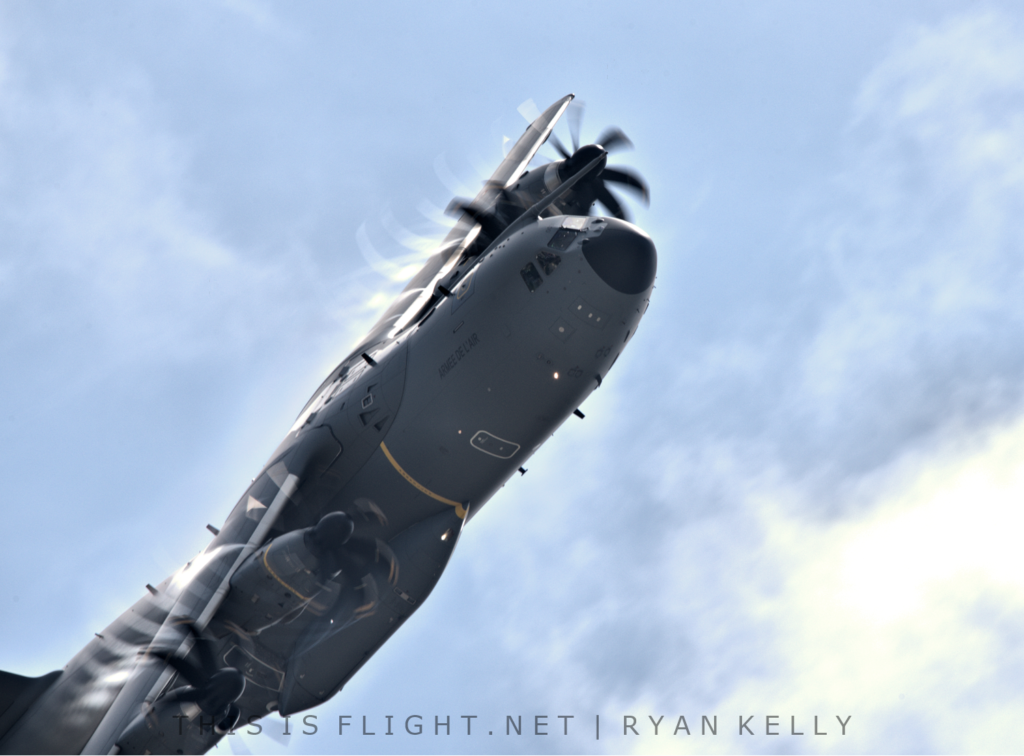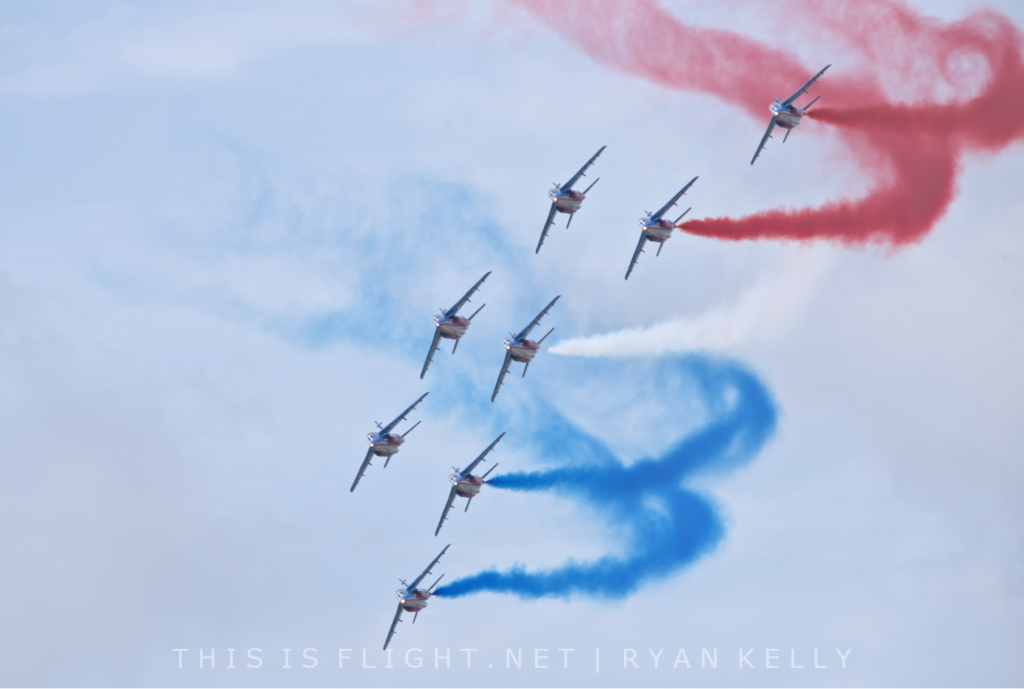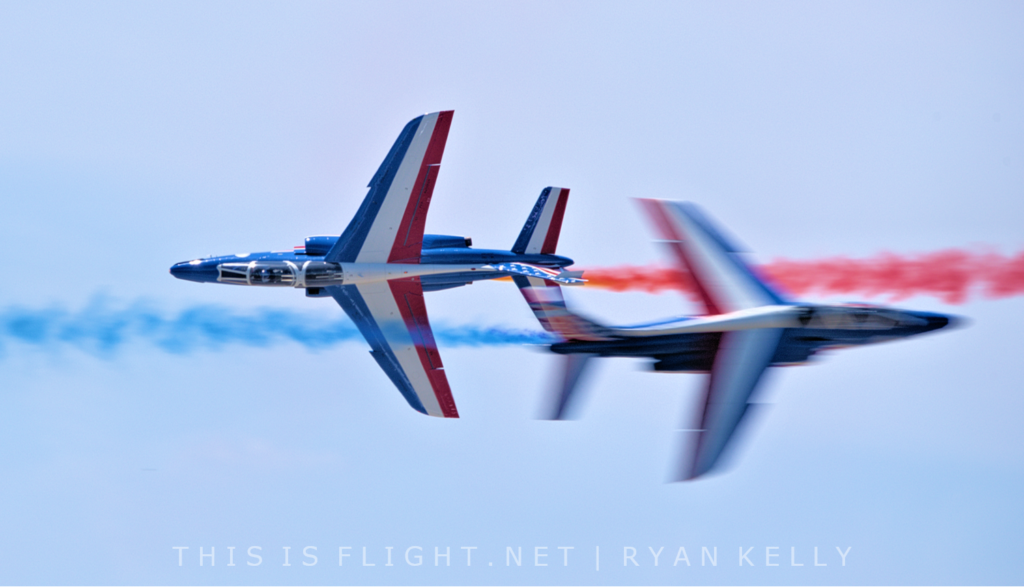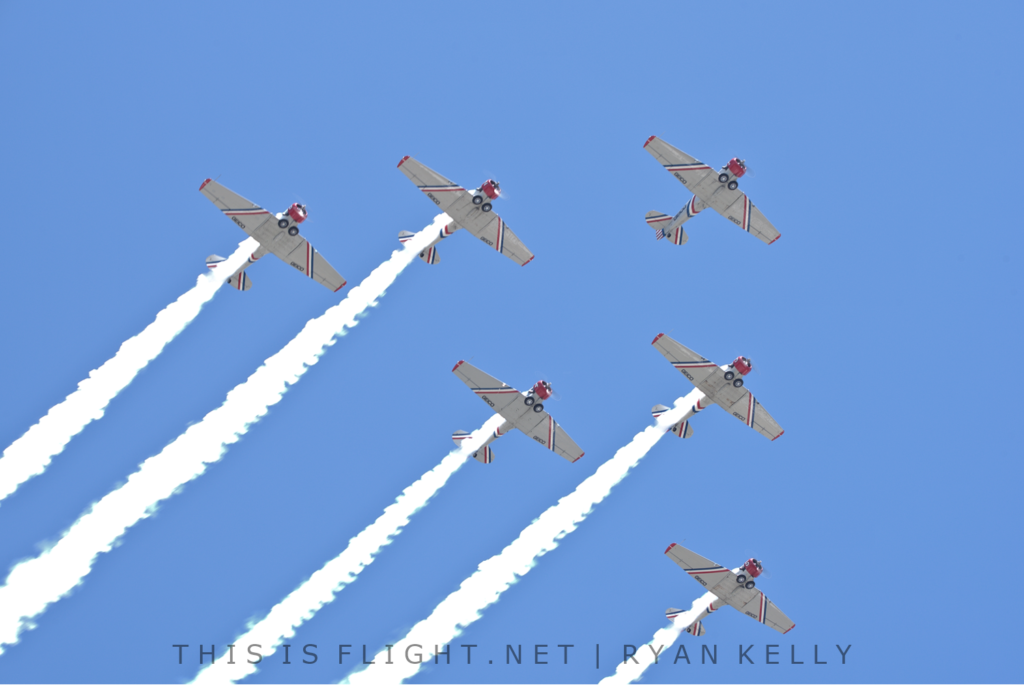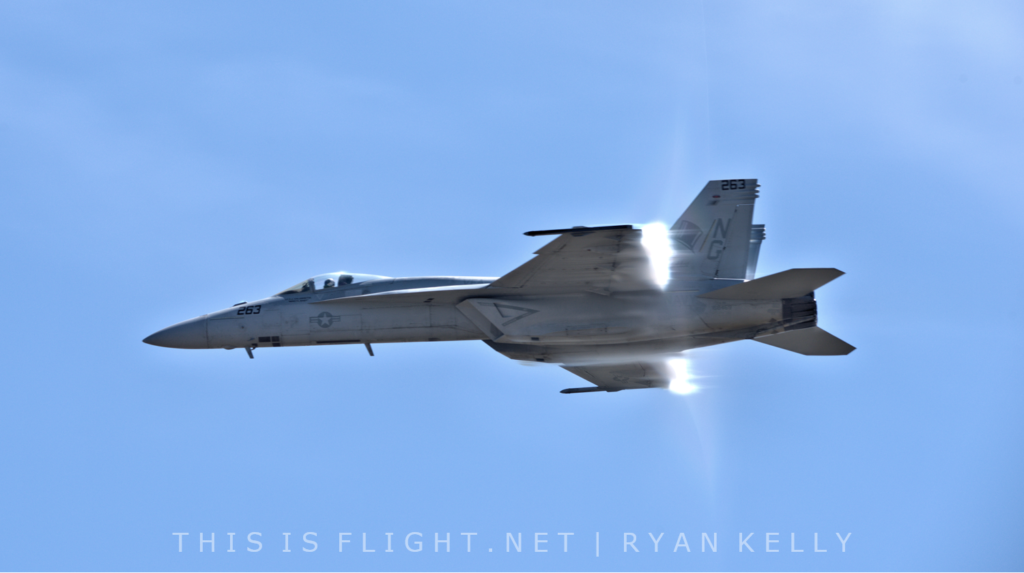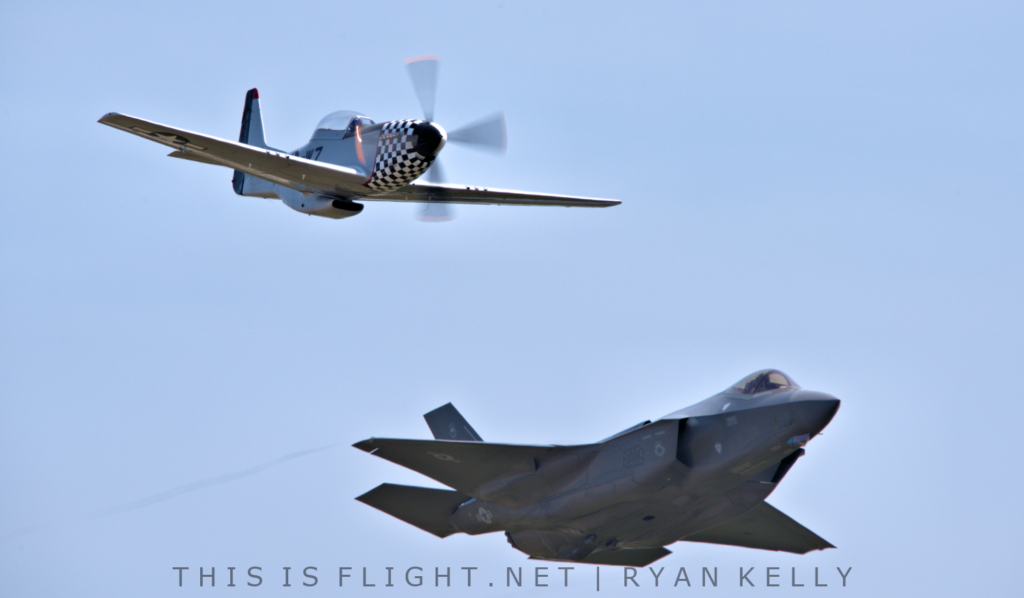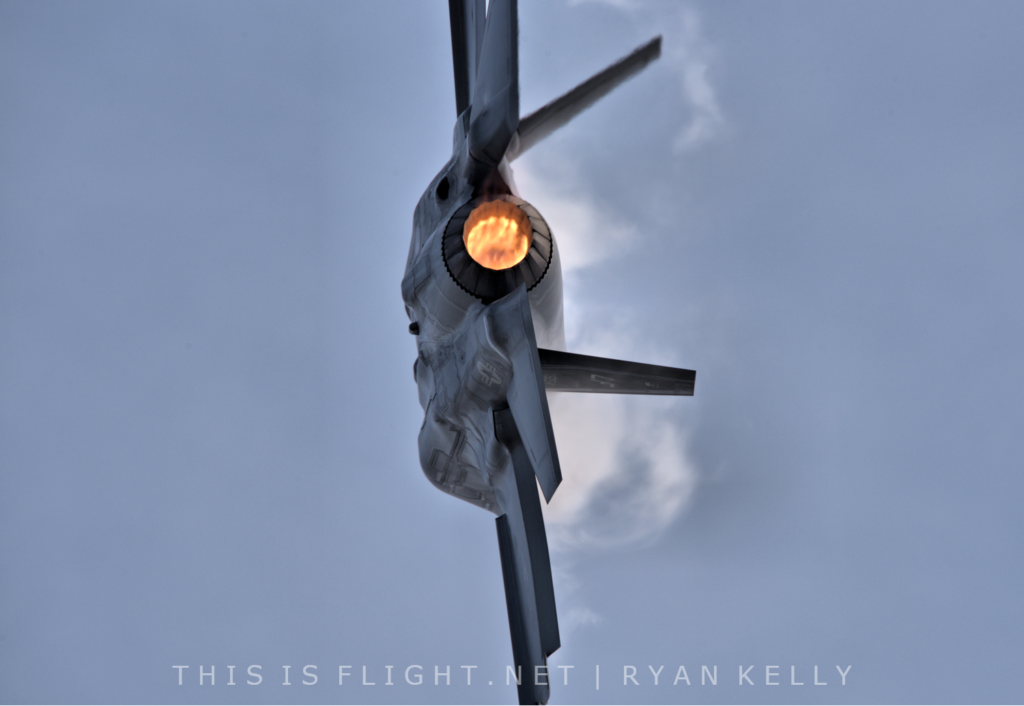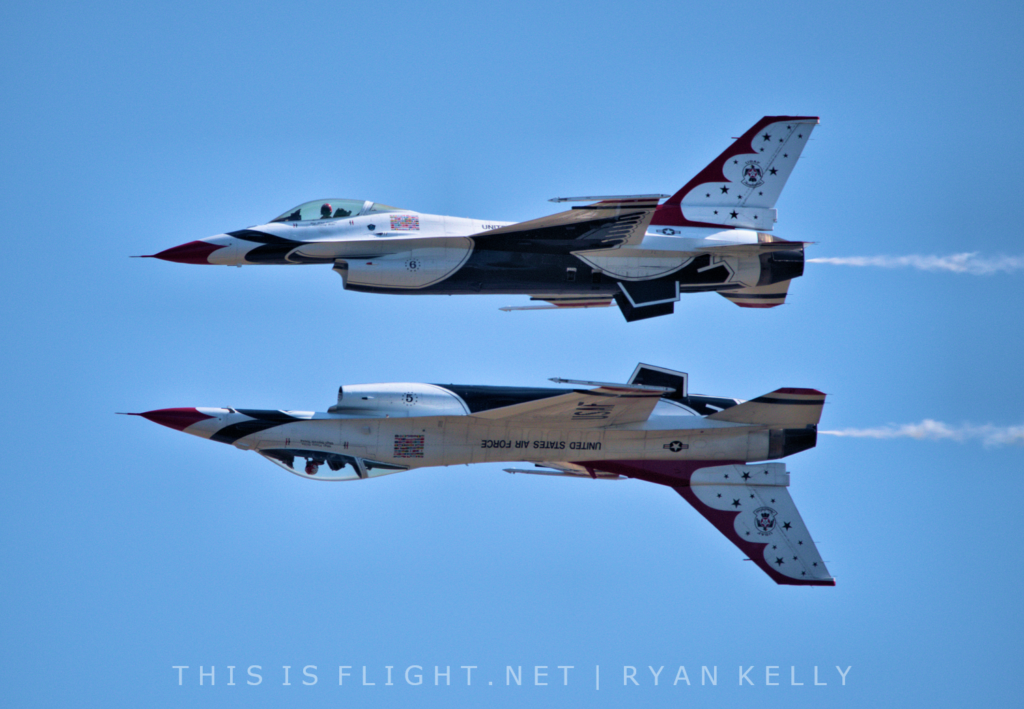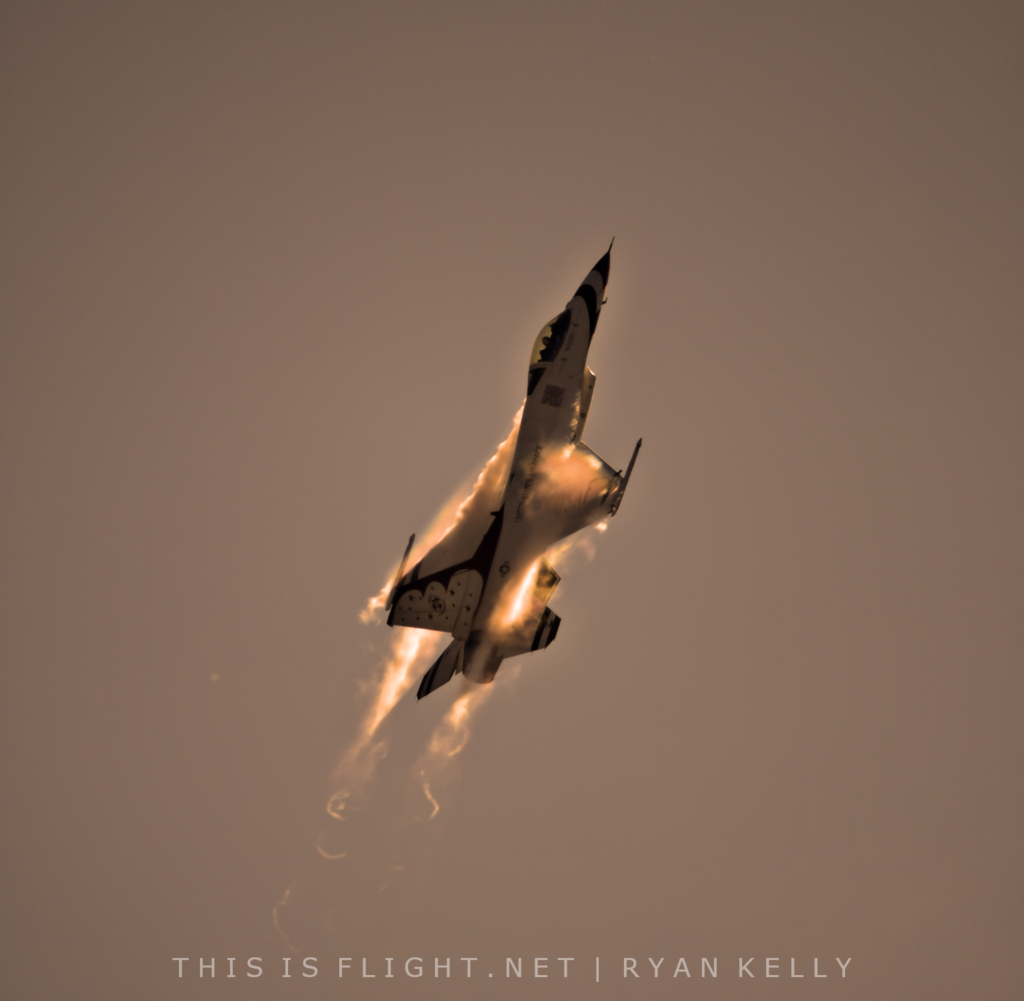Upon arrival at the gate to enter the Melbourne Air and Space Show, I was greeted by the familiar Florida humidity and sunshine. The process of going through security was fairly hassle-free as most shows here are. Following about a half-mile walk, I arrived in the static display; the layout of vendors and static was well laid out. From French fries to gyros, and chicken legs to pizza, the food and drink options were plenty and fairly reasonably priced for an airshow.
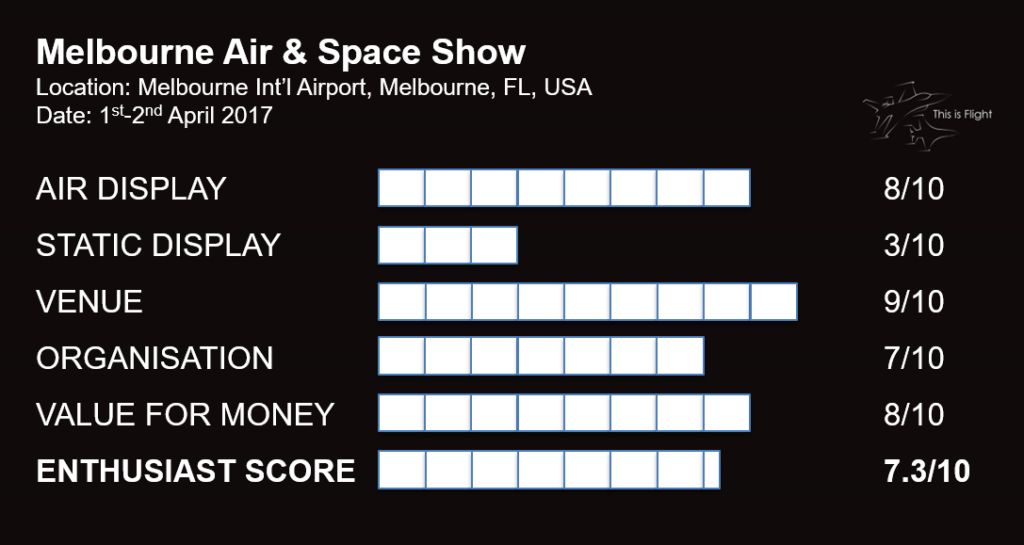
There were multiple aircraft on display ranging from a Bell Huey, to an American Airlines CRJ-200, to the famous ‘Hurricane Hunters’ with a C-130J Hercules on display. I don’t judge a show by the static displays, however I believe they’re just as important as the performers, and while I wouldn’t say I was disappointed, I do believe there could have been more to offer in this department.
The layout of the show line was well planned, paralleling the runway with clear visibility all the way around. The crowd faced south and into the sun for most of the day, making for a challenging show for any photographers and videographers. Fortunately, the lineup that was put together was sure to please. Opening the show were the SOCOM (Southern Command) Parajumpers carrying both the French and the American Flags on their jump, which was accompanied by the singing of both countries’ National Anthems celebrating the Patrouille de France’s first show in the United States in three decades. The trip across the Atlantic Ocean by the French Air Force was in recognition of the United States joining the fight in World War I, 100 years ago. Not having seen the Patrouille de France before, I did not know what to expect from their show. But prior to their act, there were to be two other performers to display
Panchito, a B-25 Mitchell from the Delaware Aviation Museum, made several passes against the backdrop of a blue and sunny sky. Panchito is a staple along the East Coast of the United States and I have seen the aircraft fly on multiple occasions; nonetheless, it is always a treat to see a B-25 in the air.
The next performer was one that was a surprise addition to the schedule. The Armée De l’Air’s Airbus A400M Atlas supporting the tour was to perform a brief demonstration prior to the Patrouille de France flying their routine. What an incredible piece of machinery! The aircraft made a few passes, including a low approach with flaps and gear down, followed by full power and a near vertical climb. The aircraft handles more like a fighter than a transport, and the show gave us here in the States our first in-person look at the capabilities of the aircraft.
Following the A400M, the Patrouille de France lined up on the runway, and took off in two four-ship formations for their demonstration. Smooth, precise, and graceful are only a few words I could use to describe their performance. Eight Alpha Jets in French colors soaring in formation above American soil for the first time in over thirty years – truly a memorable moment.
After multiple eight-ship maneuvers and formation changes followed by a bomb burst, the show alternates largely between four-ship maneuvers and two-ship manoeuvres by the two solos. One should note that there is always an aircraft in front of the crowd; there was no dead space between one group of jets and it was the fastest twenty five minutes I’ve experienced at a show.
Following the Patrouille de France was the Trescal Starduster, a small and nimble aerobatic aircraft that flew a ten minute routine over the crowd. The performer to follow would be Greg Colyer in his beautiful T-33 “Ace Maker”: I have seen him fly before, and he brings new meaning to smooth flying. His display consisted of a few passes, rolls and loops, and one pass where he couldn’t have been more than ten feet off the ground at 300 knots.
Following Greg, the renowned GEICO Skytypers started their performance with a delta formation over the crowd. The team fly the SNJ-2 (T-6 or Harvard in other parts of the world). I have seen them many times before, however I always enjoy seeing them fly the heavy trainers in close formation, and also their two solos. One can always count on them to have a great show, and the sound of the propeller tips reaching the speed of sound is some wonderful noise to anyone that loves aviation.
The U.S. Navy was up next to flex their muscles. They brought two F/A-18 Super Hornets; one single seat variant (E Model) and the double seat variant (F Model). The Tactical Demonstration Team has grown over the last few years, now displaying both the newer Super Hornet and the Legacy Hornet. The show is about fifteen minutes of ear-rattling sweet jet noise, and jaw dropping maneuvering. The highlight of the performance was a simulated ‘Bolter’: this refers to when the aircraft would be landing on an aircraft carrier and misses one of the cables for an arrested landing. The Super Hornet performance ended with a fast photo pass that created some fantastic photo opportunities with the vapour shrouding the aircraft.
The U.S. Air Force Heritage Flight began next, featuring a P-51D Mustang and the newest stealth fighter on the market: the F-35A Lightning II. The display consisted of three separate topside passes, and the final one closing with a break in front of the crowd followed by an aileron roll. Prior to landing both aircraft made several passes, including high speed and break for landing. This allowed the spectators to get an up close and personal feel to the immense power that the F-35 has. It was one of the loudest aircraft I have ever heard. Period.
The final performers for the day were the U.S. Air Force Thunderbirds, flying six F-16 C/D Fighting Falcons in a thirty minute show. The ‘Diamond’ (aircraft 1-4) display the grace and precision of the F-16, while the solos (5 and 6) display the capabilities of the aircraft. Some of the best pilots in the world are chosen for the role of a Thunderbird pilot, and the six for this season that were chosen showed just how good they are. Seeing the Thunderbirds multiple times, I am never disappointed when they fly. However, as the day elapsed on both days, the lighting began to deteriorate as we were oriented towards the southern sky and the sun was facing us for the majority of the day.
My final thoughts on the show: it was a truly wonderful experience as I have never seen the Patrouille de France before, and the A400M was certainly a show brightener. While a terrific show, the poor lighting and lack of static display ultimately brought the experience down, just a touch. I hope to see the PAF along with the A400M once again in the near future.
Ryan Kelly has been around aviation for over twenty years and photography for five. He is a licensed pilot that enjoys sharing his passion for aviation and photography with others. Ryan currently resides in Eastern Pennsylvania and enjoys sports, music, and cooking.
